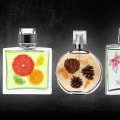This feminine perfume that smells like women, revolutionary in its composition, name and presentation, was born from the association between Gabrielle Chanel and perfumer Ernest Beaux. The fragrance, infused with jasmine, rose, sandalwood and vanilla, was an immediate success, thanks in part to some of Coco's ingenious marketing tricks. The first Chanel fragrance to be presented in a round bottle, Chance Eau de Toilette, was introduced in 2003 and was created again by Jacques Polge. The scent is floral and delicate, with jasmine and hyacinth as the protagonists, but these notes are complemented by a spicy touch underlying pink pepper and an attractive sweet core.
Have you ever tried the fragrance of Chanel No. As such, more than a century after the brand launched its first composition, Chanel perfumes are still perceived by many today as the pinnacle of luxury scents. Chanel may not have known that the Wertheimers, who had fled France to New York in 1940, had instituted a process by which the quality of Chanel No. Tilar Mazzeo, author of The Secret of Chanel #5, told the World Service's Witness program why the fragrance was brought to Chanel.
Levy, president of The Fragrance Foundation, shares her expert opinion on what makes each of these great Chanel perfumes truly iconic. Thomas's mission was to establish the mechanisms necessary to maintain the quality of Chanel products, in particular its most cost-effective fragrance, Chanel No. It was a small advertisement for Parfums Chanel advertising the line of Chanel fragrances available at Bonwit Teller, a luxury department store. In the early 1940s, when other perfume manufacturers were increasing their brand exposure, Parfums Chanel took a contrary stance and reduced advertising.
In the advertisement, all the bottles were indistinguishable from each other and showed all the available Chanel perfumes, numbers 9, 11 and 22, and the centerpiece of the line, No. The stakes were high and Chanel was determined to take control of Parfums Chanel from the Wertheimers. Created in 1921, the next interpretation of this legendary fragrance wouldn't come to life until 1986, when Chanel perfumer Jacques Polge created a more complete version that would become the Eau de Parfum. Chanel did not know that the Wertheimers, in anticipation of the coming Nazi seizures, had legally ceded control of Parfums Chanel in May 1940 to Felix Amiot, a French Christian businessman and industrialist.




